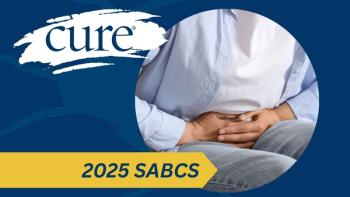
Aerobics, Strength Exercises Improve Quality of Life in Kidney Cancer Survivors
Meeting combined exercise guidelines improved quality of life in kidney cancer survivors; however, few individuals reported that they actually follow such guidelines.
Meeting combined exercise guidelines — including both aerobics and strength training – improved quality of life in kidney cancer survivors; however, few individuals reported they follow such guidelines, according to study findings published in Psycho-Oncology.
“
The American Cancer Society and American College of Sports Medicine recommend that cancer survivors engage in 150 minutes of
However, the optimal exercise program for improving quality of life in cancer survivors is unclear. Therefore, the researchers surveyed 703 kidney cancer survivors using a provincial registry in Canada to estimate the prevalence of meeting the combined and independent aerobic and strength
“We hypothesized that few (kidney cancer survivors) would be meeting either single exercise guideline, and even fewer would be meeting the combined exercise guideline. We further hypothesized that those meeting the combined exercise guideline would report better (quality of life) than those meeting either single modality exercise guideline or neither exercise guideline,” the researchers wrote. “Finally, we hypothesized that those meeting either single modality exercise guideline would report better (quality of life) than those meeting neither guideline.
On average, patients were approximately 65 years old, more than five years out from their initial diagnosis and had a body mass index (BMI) of about 28.5. The majority were male (62.9 percent) and had localized kidney cancer (81.7 percent).
In total, 71 patients met the combined exercise guideline (10.1 percent), 112 met the aerobic‐only guideline (15.9 percent), 62 met the strength‐only guideline (8.8 percent) and 458 met neither guideline (65.1 percent).
Correlates of the various exercise guidelines were age, education, employment, drinking status, drug treatment, current disease status and BMI.
Patients who met the combined exercise guidelines experienced superior quality of life outcomes compared with those who met either single modality guideline — which were both superior to meeting neither guideline, but were no different from one another.
“Our study suggests that exercise programs should target both aerobic and strength exercise for additional (quality of life) benefits in (kidney cancer survivors). For (kidney cancer survivors) who are unable or unwilling to perform both exercise guidelines, it appears that either exercise guideline is better than no exercise for (quality of life) with no difference between the two exercise modalities,” the researchers wrote.
They added that future research is necessary to promote the combined guidelines in this patient population; however, differences in demographics, medical groups and behavior may affect how individuals meet the various exercise guidelines.
“Specifically, understanding the predictors of meeting the various exercise guidelines is useful for promoting exercise in cancer survivors,” the researchers concluded. “Future research should address the manipulation of dose such as frequency (ie, three vs. five days per week for aerobic training and two vs. three days per for strength training), intensity (ie, manipulation of various heartrate intensities for aerobic training and percentages of one repetition maximum for strength training), and duration (shorter vs. longer workouts) that may lead to clinically relevant changes in (quality of life).”





